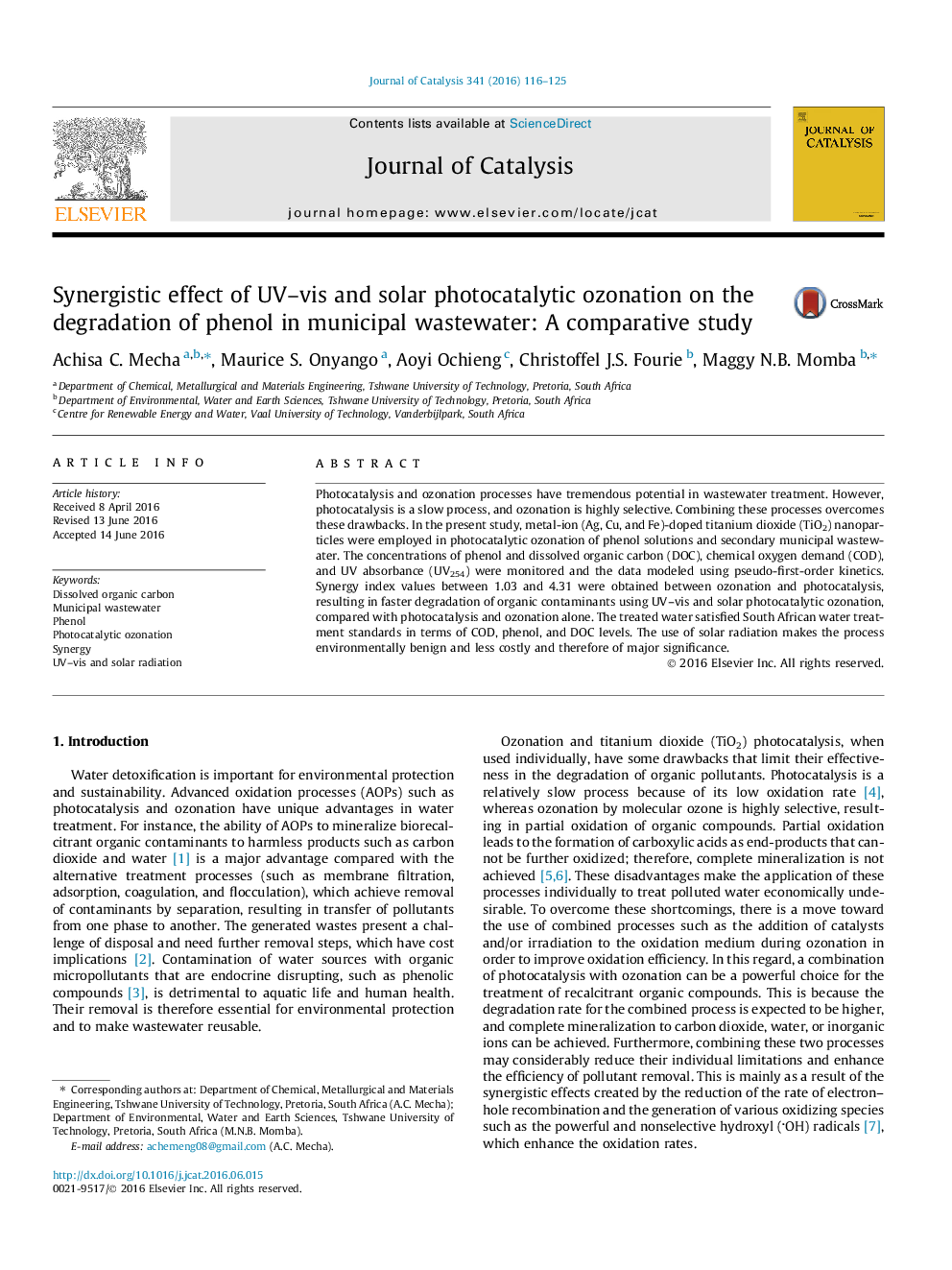| کد مقاله | کد نشریه | سال انتشار | مقاله انگلیسی | نسخه تمام متن |
|---|---|---|---|---|
| 60492 | 47534 | 2016 | 10 صفحه PDF | دانلود رایگان |
• Photocatalytic ozonation is a powerful oxidation process for water and wastewater treatment.
• Synergy was observed by combining various metal-ion-doped TiO2 photocatalysts with ozone.
• Synergy factors of between 1.03 and 4.31 were obtained during photocatalytic ozonation.
• The performance of solar and UV–vis photocatalytic ozonation processes was comparable.
Photocatalysis and ozonation processes have tremendous potential in wastewater treatment. However, photocatalysis is a slow process, and ozonation is highly selective. Combining these processes overcomes these drawbacks. In the present study, metal-ion (Ag, Cu, and Fe)-doped titanium dioxide (TiO2) nanoparticles were employed in photocatalytic ozonation of phenol solutions and secondary municipal wastewater. The concentrations of phenol and dissolved organic carbon (DOC), chemical oxygen demand (COD), and UV absorbance (UV254) were monitored and the data modeled using pseudo-first-order kinetics. Synergy index values between 1.03 and 4.31 were obtained between ozonation and photocatalysis, resulting in faster degradation of organic contaminants using UV–vis and solar photocatalytic ozonation, compared with photocatalysis and ozonation alone. The treated water satisfied South African water treatment standards in terms of COD, phenol, and DOC levels. The use of solar radiation makes the process environmentally benign and less costly and therefore of major significance.
Figure optionsDownload high-quality image (80 K)Download as PowerPoint slide
Journal: Journal of Catalysis - Volume 341, September 2016, Pages 116–125
